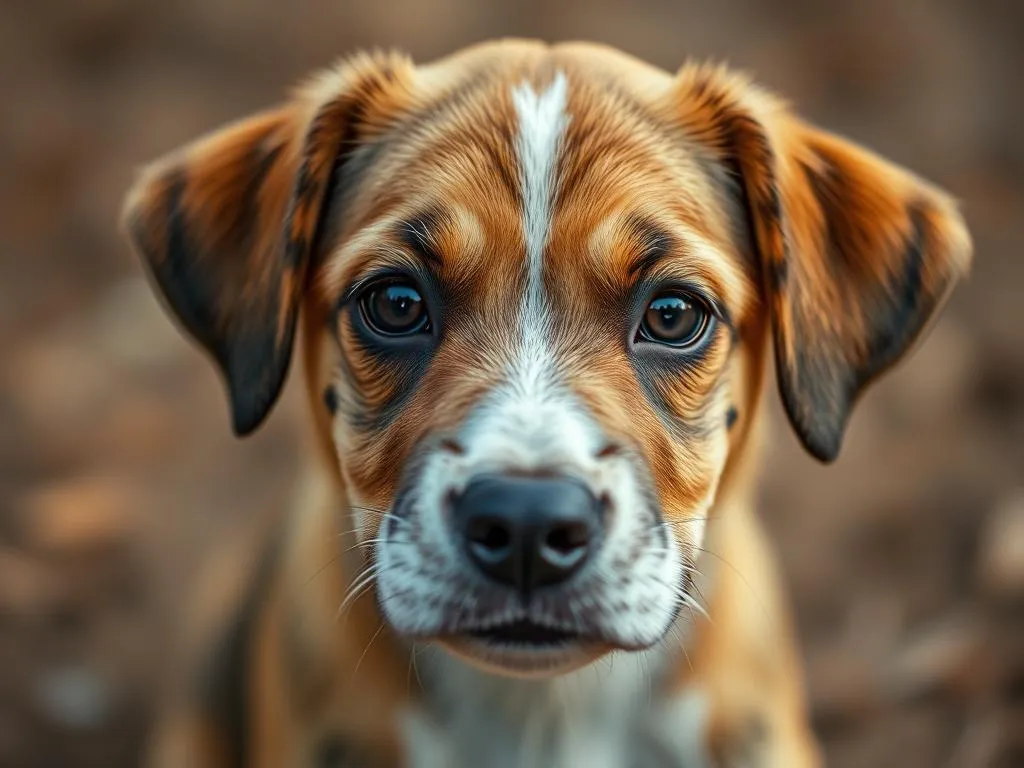
Introduction
In the realm of pets, dogs often top the list as our favorite companions, and a significant part of their charm is their cuteness. But what does it mean for a dog to be “cute”? In this context, cuteness refers to a combination of physical traits such as large, expressive eyes, fluffy fur, and small, playful behavior. These traits not only endear them to us but may also confer evolutionary advantages. Understanding these advantages can shed light on why certain traits persist in dog breeds and highlight the importance of these characteristics for dog owners and breeders alike.
This article explores how traits considered “cute” can benefit dogs from an evolutionary perspective, emphasizing the ways in which cuteness fosters deeper connections with humans, enhances survival chances, and influences behaviors that can have lasting impacts on their lives.
Understanding “Cute” in Dogs
Characteristics of Cuteness
When we think of cute dogs, specific characteristics often come to mind. Physically, cute dogs tend to have:
- Big eyes: These often evoke a nurturing response in humans.
- Floppy ears: These add to a dog’s overall adorable appearance.
- Small size: Smaller dogs tend to be perceived as cuter, perhaps due to our association of smallness with vulnerability.
In addition to these physical features, certain behavioral traits contribute significantly to a dog’s perceived cuteness, such as:
- Playfulness: Dogs that exhibit lively, playful behaviors often appear more adorable.
- Affectionate behaviors: Dogs that show affection, such as licking and cuddling, enhance their cuteness factor.
Human Perception of Cuteness
Humans have a unique and profound reaction to cute animals. Research indicates that cute stimuli activate brain regions associated with pleasure and nurturing, prompting us to engage in protective behaviors. This reaction is not merely emotional; it has roots in our evolutionary past, where nurturing instincts were crucial for the survival of our species.
Studies show that when humans encounter cute features in dogs, they often experience a rush of positive feelings, leading to increased attentiveness and care. This nurturing instinct serves to strengthen the bond between humans and dogs, making them more than just pets; they become members of the family.
Evolutionary Biology Basics
Introduction to Evolutionary Advantage
An evolutionary advantage refers to a trait that improves an organism’s chances of survival and reproduction. In the animal kingdom, natural selection plays a critical role in determining which traits become more prevalent over generations. When certain characteristics confer benefits, they are likely to be passed down, creating a lineage that embodies those advantageous traits.
The Role of Domestication
Dogs are unique in their relationship with humans, having been domesticated thousands of years ago. This domestication process has significantly altered their physical and behavioral traits. As humans selected for certain desirable characteristics, including cuteness, these traits became more prominent in dog breeds.
Selective breeding, especially for companion dogs, has emphasized cuteness, leading to the proliferation of breeds with exaggerated cute features. This focus on aesthetics has shaped the appearance and behavior of dogs, enhancing their appeal to humans and reinforcing the evolutionary advantages associated with being cute.
The Advantages of Cuteness in Dogs
Social Bonding with Humans
One of the most significant evolutionary advantages of being cute for dogs is the enhancement of social bonding with humans. Various studies demonstrate that humans are more inclined to interact positively with dogs that display cute features. For instance, people are more likely to engage in petting, playing, and talking to dogs perceived as cute, fostering a strong emotional connection.
This bond is not just beneficial for emotional well-being; it can also lead to better care and attention from owners. Dogs that are perceived as cute tend to receive more affection, training, and socialization, which are crucial for their overall development and happiness.
Survival and Protection
Cuteness can evoke protective instincts in humans, which is a significant advantage for dogs. When people perceive a dog as cute, they are more likely to take steps to ensure its safety. This protective behavior translates into better living conditions, access to veterinary care, and a higher likelihood of being adopted from shelters.
Dogs that exhibit cute traits are often perceived as more vulnerable, further enhancing their chances of receiving care and protection. This instinctual response from humans can have lasting implications for a dog’s survival and well-being.
Enhanced Adoption Rates
Statistics reveal that cute dogs have higher adoption rates than their less cute counterparts. Shelters often report that dogs with appealing physical attributes are adopted more quickly, reducing their time in a potentially stressful environment.
In a study conducted by a prominent animal welfare organization, it was found that dogs labeled as “cute” were adopted at a rate 30% higher than those without such characteristics. This phenomenon underscores the impact of cuteness in rescue organizations and shelters, where the goal is to find loving homes for as many dogs as possible.
Behavioral Traits Associated with Cuteness
Playfulness and Interaction
Playful behaviors contribute significantly to a dog’s perceived cuteness. Dogs that engage in playful antics, such as chasing their tails or playing with toys, are often viewed as more adorable. This playfulness not only enhances their cuteness but also facilitates social interactions with humans and other dogs.
Play is essential for a dog’s mental and physical health. It helps develop social skills and can lead to stronger bonds between dogs and their owners. The joy that comes from play can be contagious, creating a positive environment that benefits both the dog and the human.
Affectionate Behaviors
Affectionate behaviors, such as snuggling, licking, and wagging tails, play a crucial role in enhancing a dog’s cuteness. These behaviors strengthen the emotional connection between dogs and humans, fostering a sense of companionship and loyalty.
From an evolutionary standpoint, forming strong social bonds is essential for survival. Dogs that exhibit affectionate behaviors are more likely to receive care and attention from humans, further ensuring their well-being. This mutual affection creates a robust relationship that benefits both parties.
The Impact of Cuteness on Dog Training and Behavior
Training and Compliance
Cuteness can significantly influence the success of dog training. Owners may exhibit more patience and understanding toward cute dogs, leading to better training outcomes. Studies suggest that humans are more forgiving of behavioral missteps in dogs perceived as cute, allowing for a more positive training experience.
As a result, cute dogs may have an easier time learning commands and behaviors, as their owners are more inclined to invest time and effort into their training. This dynamic highlights how cuteness can directly impact a dog’s behavior and training success.
Behavioral Expectations
While being cute has many advantages, it can also lead to different behavioral expectations from humans. Cute dogs may be given leeway for behaviors that would typically be frowned upon in larger or less cute breeds. For instance, a small dog that barks excessively may be excused due to its perceived cuteness, while a larger breed exhibiting the same behavior may face stricter repercussions.
This phenomenon can lead to behavioral issues down the line, as dogs may not learn the appropriate boundaries and behaviors expected of them. Understanding the implications of cuteness can help dog owners set reasonable expectations and boundaries for their pets.
Cultural Perspectives on Dog Cuteness
Global Variations in Perception
Cuteness is not a universal concept; different cultures have varying perceptions of what makes a dog cute. For example, in some cultures, larger dog breeds may be favored, while in others, smaller breeds are seen as more appealing. These cultural differences can significantly influence dog breeding and selection practices.
Additionally, specific traits may be emphasized in certain regions based on societal norms and preferences. Understanding these cultural variations can provide insights into the diverse world of dog breeding and ownership.
Media Influence
The media plays a significant role in shaping perceptions of cute dogs. Movies, television shows, and social media platforms often highlight certain breeds or physical traits, influencing public opinion and adoption rates. Viral trends can lead to a surge in popularity for specific dog breeds, often based on their perceived cuteness.
This influence can have both positive and negative effects. On one hand, it can lead to increased adoption rates for certain breeds, while on the other, it may encourage irresponsible breeding practices focused solely on aesthetics rather than health and well-being.
Ethical Considerations
Breeding for Cuteness
While the evolutionary advantages of cuteness are clear, there are ethical concerns surrounding breeding practices that focus on extreme physical traits. Breeding for cuteness can lead to health issues in certain breeds, as some traits may compromise a dog’s well-being. For example, brachycephalic breeds, known for their flat faces, often suffer from respiratory issues due to their physical characteristics.
Responsible breeders should prioritize the health and well-being of dogs over aesthetics. Understanding the potential ramifications of breeding for cuteness is crucial for ensuring the long-term health of dog breeds.
Responsibilities of Dog Owners
Dog owners play a critical role in ensuring that their pets receive the care and attention they need, regardless of their cuteness. Understanding the evolutionary advantages of cuteness can inform responsible ownership practices. Prioritizing health, training, and socialization is essential for the overall well-being of dogs.
By recognizing the potential downsides of cuteness, owners can make informed decisions that prioritize their dogs’ health and happiness, ensuring that they live fulfilling lives.
Conclusion
In exploring how being cute provides evolutionary advantages for dogs, we can see the profound impact of cuteness on their relationships with humans, their survival, and their overall well-being. From fostering social bonds and enhancing adoption rates to influencing training success, the benefits of cuteness are significant.
As we continue to celebrate the unique traits of our canine companions, it is essential to prioritize responsible breeding and ownership practices that prioritize health and welfare. By understanding the evolutionary significance of cuteness, we can ensure that our beloved dogs thrive both physically and emotionally in our homes.
References
For further reading on dog evolution, behavior, and the human-animal bond, consider exploring reputable sources such as scientific studies, books, and articles that delve deeper into these fascinating topics.









